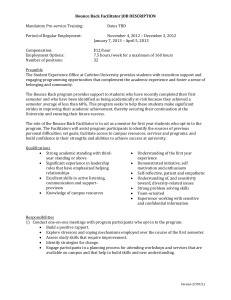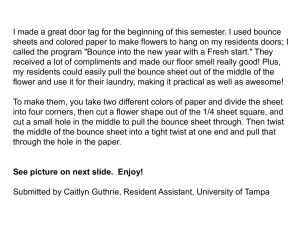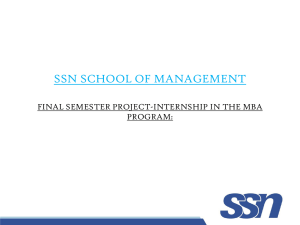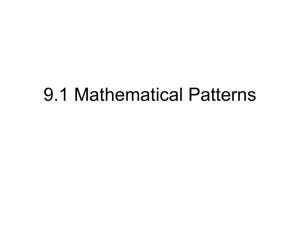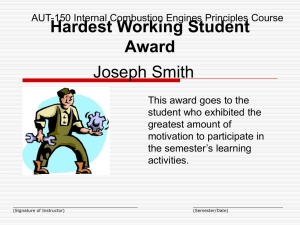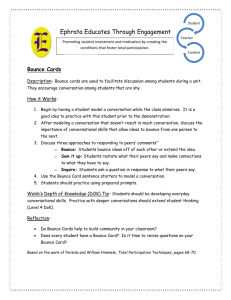Ecological Academic Intervention at UNC
advertisement
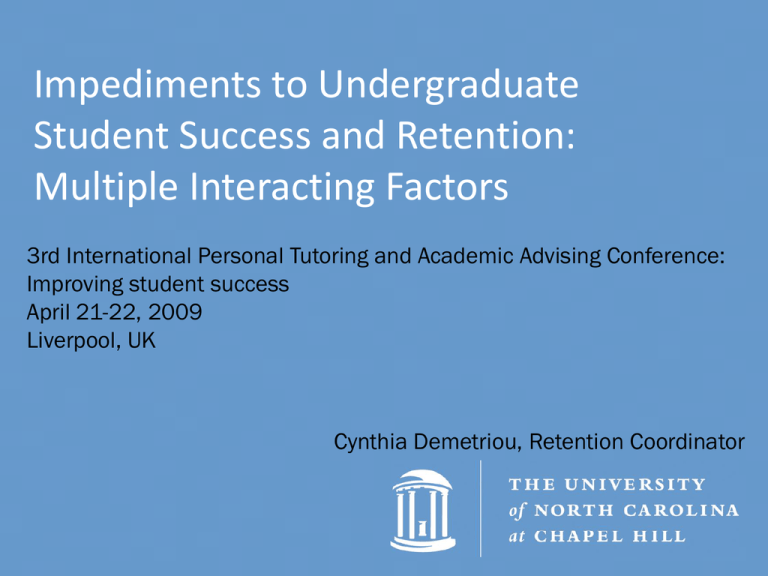
Impediments to Undergraduate Student Success and Retention: Multiple Interacting Factors 3rd International Personal Tutoring and Academic Advising Conference: Improving student success April 21-22, 2009 Liverpool, UK Cynthia Demetriou, Retention Coordinator UNC-CH Academic Eligibility Requirements A 2.000 cumulative UNC-Chapel Hill grade-point average and the following number of academic semester credit hours passed: 9 academic hours to enter a second semester 24 academic hours to enter a third semester 36 academic hours to enter a fourth semester 51 academic hours to enter a fifth semester 63 academic hours to enter a sixth semester 78 academic hours to enter a seventh semester 93 academic hours to enter an eighth semester Special permission of the dean to enter a ninth semester Students who fall short of the standards, but have passed at least nine credit hours of graded coursework (excluding BE or PL credits) in the preceding semester and who were not already on probation, will be on academic probation for one semester with the objective of meeting those standards. Study Skills Band-Aid Students’ Explanations for Failure to Graduate Multiple interacting factors: • Academic problems • Financial 2004 Retention Study Group • Personal problems • Unaware or reluctant to use services Synergism: “the joint operation of two or more forces produces an effect that is greater than the sum of the individual effects” (Bronfenbrenner, 1989) Self-Assessments of PR Students Multiple Interacting Factors Contributing to Academic Probation (top 10): 1. Time management 2. Study skills 3. Procrastination 4. Stress management 5. Inability to Concentrate 6. Test Taking Skills 7. Course Selection 8. Lack of Motivation 9. Family & Personal Relationships 10.Depression Do Something Different Take an ecological approach to academic intervention • The Bounce Back Retention Program is an example of an ecological intervention Overview of Ecological Systems Theory Ecological Prespective of Human Development (Urie Bronfenbrenner) • Human development occurs through interaction between overlapping and nested ecological systems • Individual affects as well as is affected by the settings in which she spends time Applying Bronfenbrenner’s Theory to Student Success • To understand failure to persist, examine classroom experiences as well as the students’ experiences within their family, neighborhood and community – Both at the university and before they came to the university Value of an Undergraduate Degree Cultural and Societal Definitions of Success C h r o n o s y s t e m Macrosystem Exosystem Job Market and Economy University Policies Mass Media Government and Fin. Aid Mesosystem Microsystem STUDENT Peers Faculty Family School Personnel Support Services Student Activities Workplace Multiple Interacting Factors Affecting Student Success Mesosystem: A System of Microsystems Family Health Student Success Community Engagement Educational Preparation The Bounce Back Retention Program Academic Intervention with an Ecological Approach What is Bounce Back? • Offered from the department of Counseling and Wellness Services in cooperation with the Office of Undergraduate Education • Voluntary, semester-long intervention • Weekly small (8-10 students) group meetings • Facilitated by a mental health professional and a peer coach • The student is an individual affected by and affecting the environment. • Interactions in home, family, school, community and society are key to promoting persistence, resiliency and academic success. • Bounce Back helps students understand themselves in relation to these ever changing ecological systems by fostering student resiliency. In the ecological approach, participation in social relationships is required for development. Learn from peers Participants identify with each other Peer Coach Sense of community Preliminary Analysis of Bounce Back at UNC-Chapel Hill Bounce Back is part of a larger program of intervention for students on academic probation that can be found at www.studentsuccess.unc.edu Average GPA Increase 0.6 +.512 0.5 0.4 +.336 0.3 0.2 0.1 0 Bounce Back Regular Attenders Standard Intervention Spring 2008 Bounce Back EOT Spring % of PR Returned to Good Standing BB Regular Attenders Returned to Good Standing All PR 50 52 54 56 58 60 62



